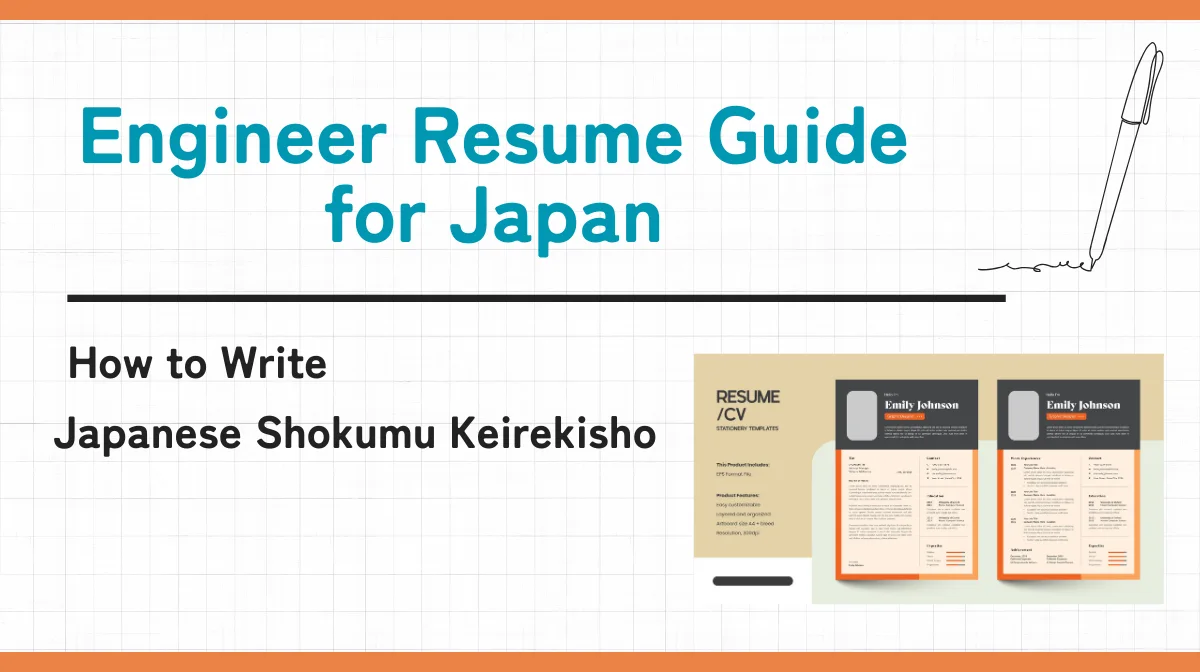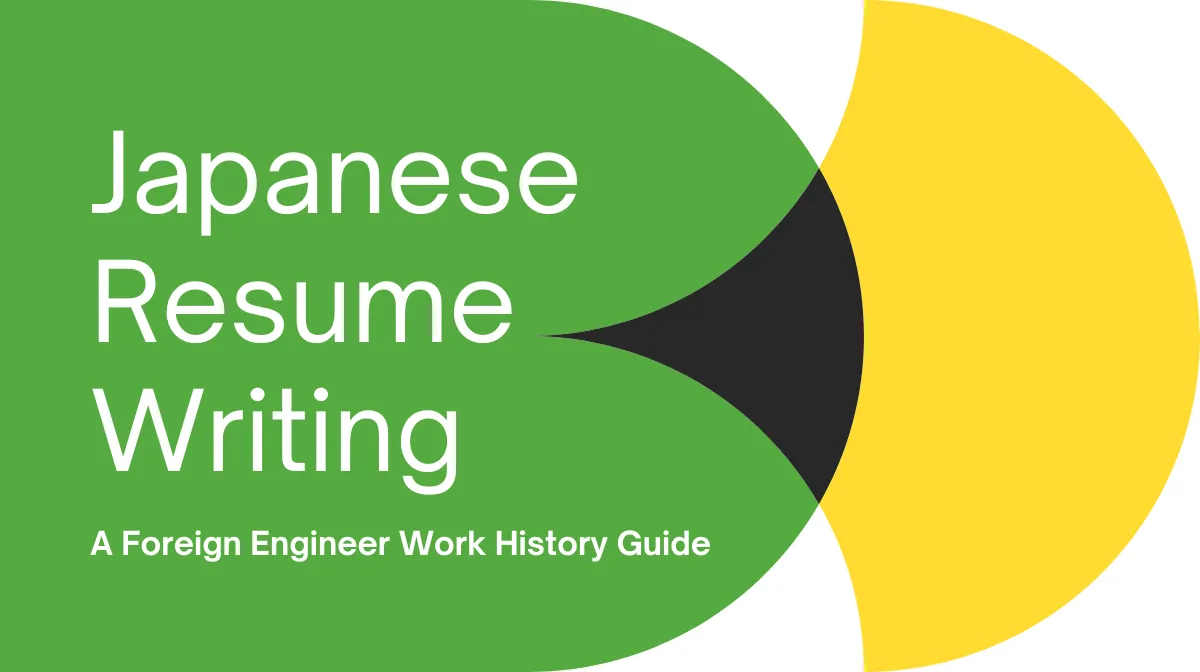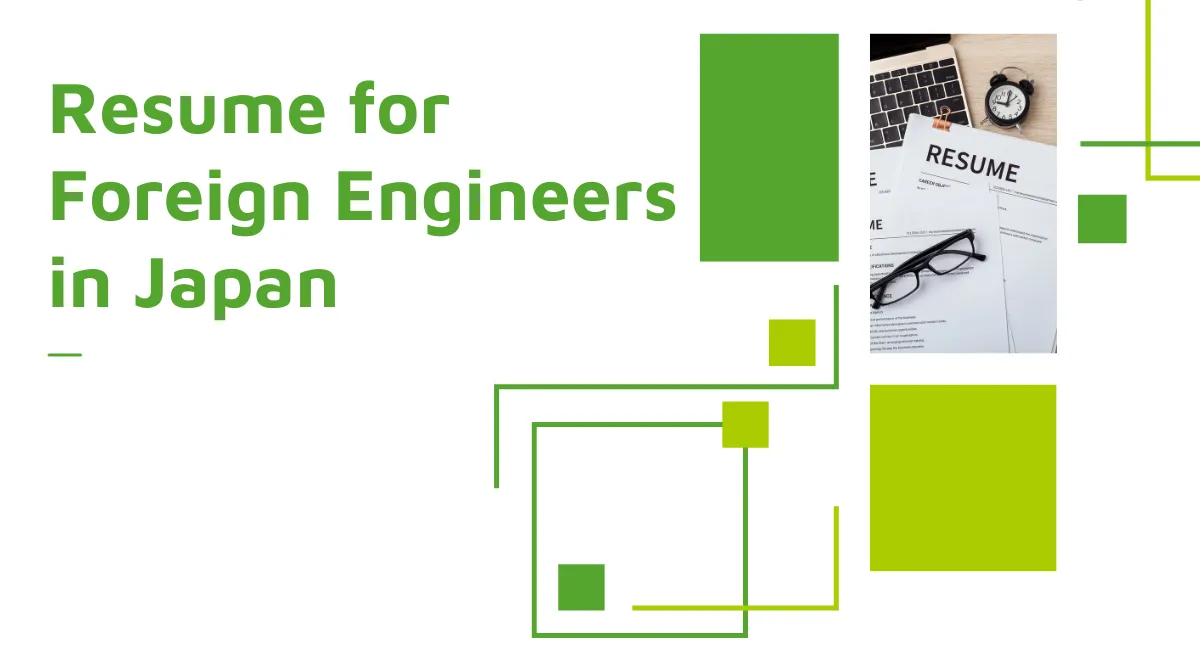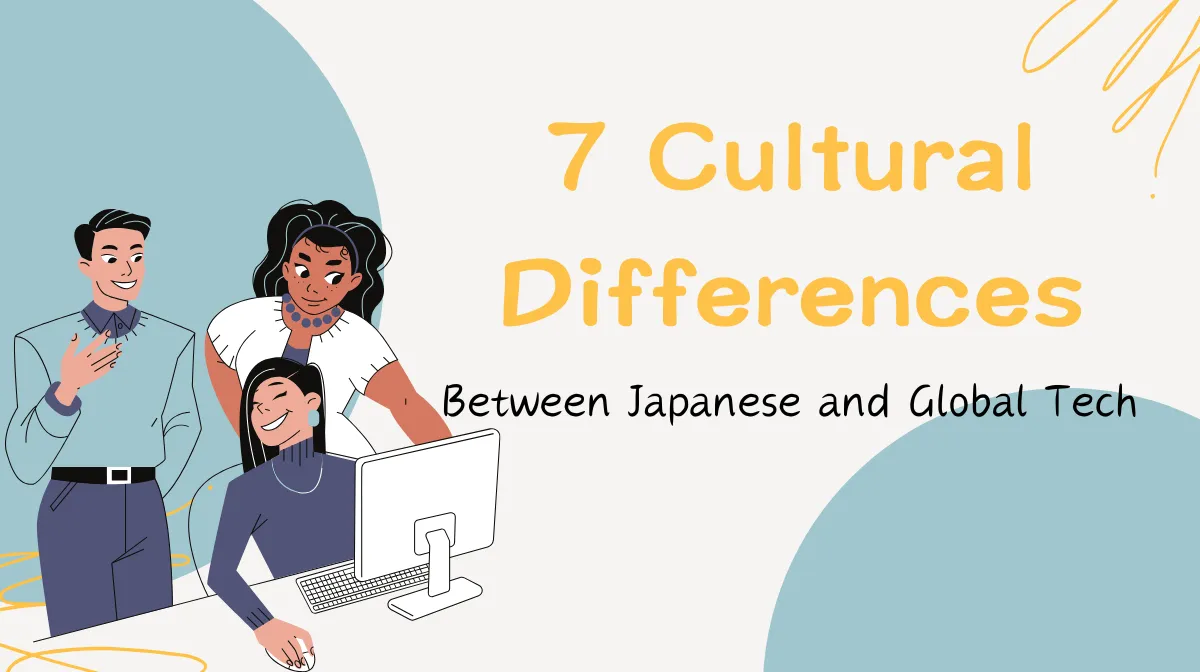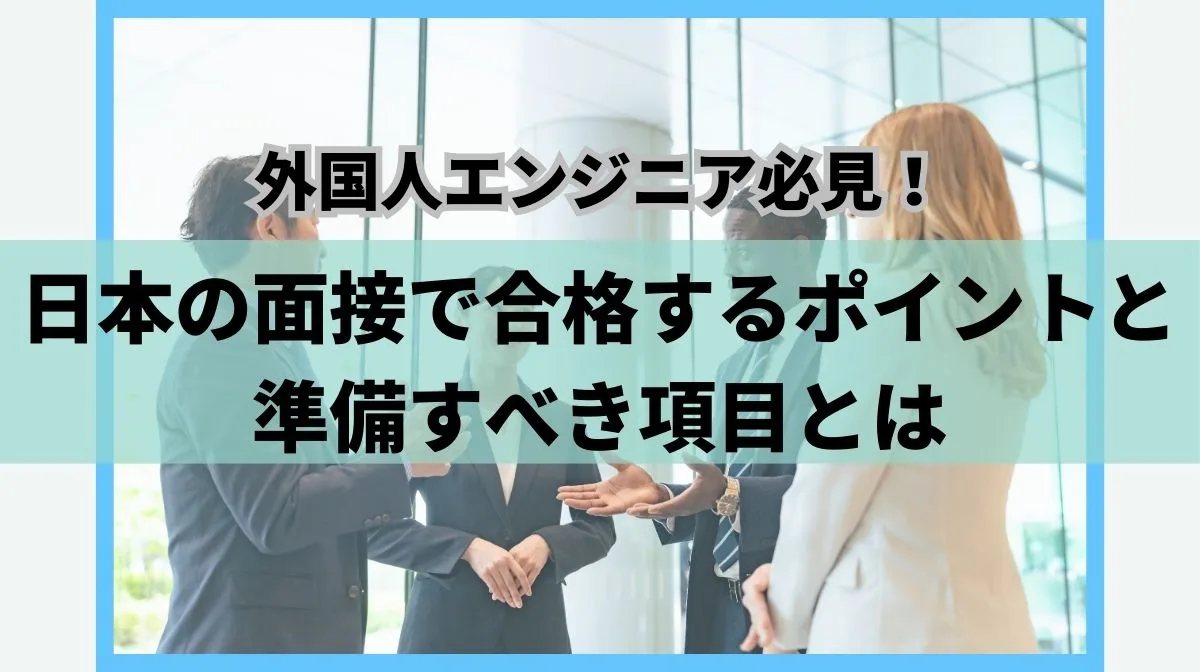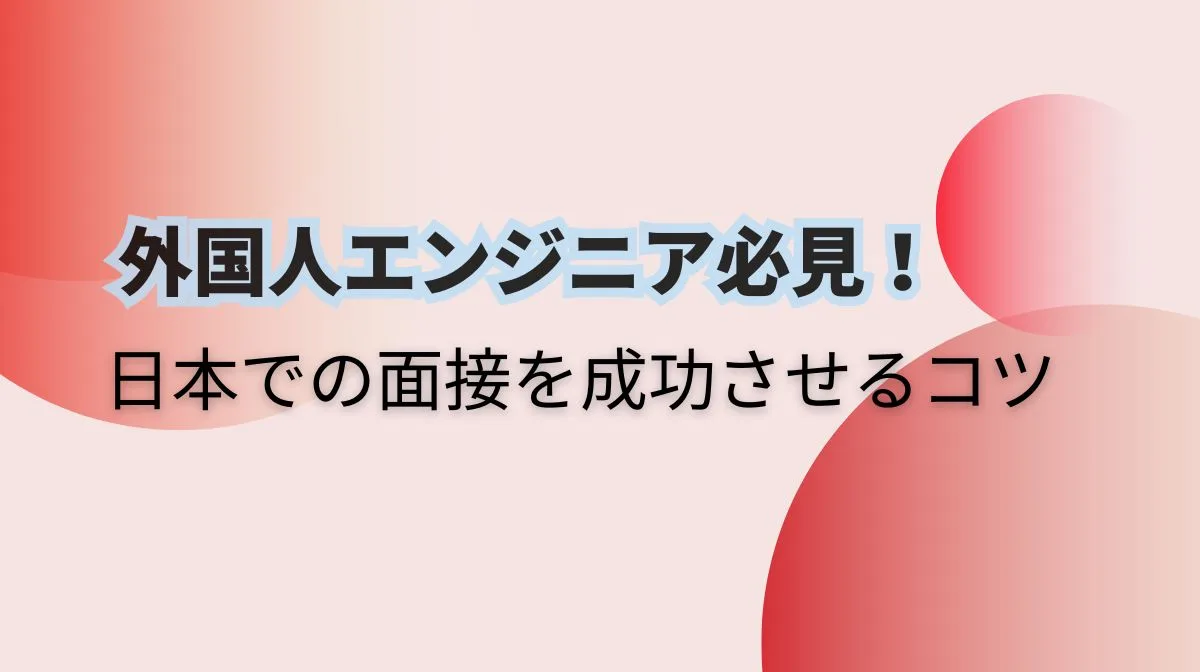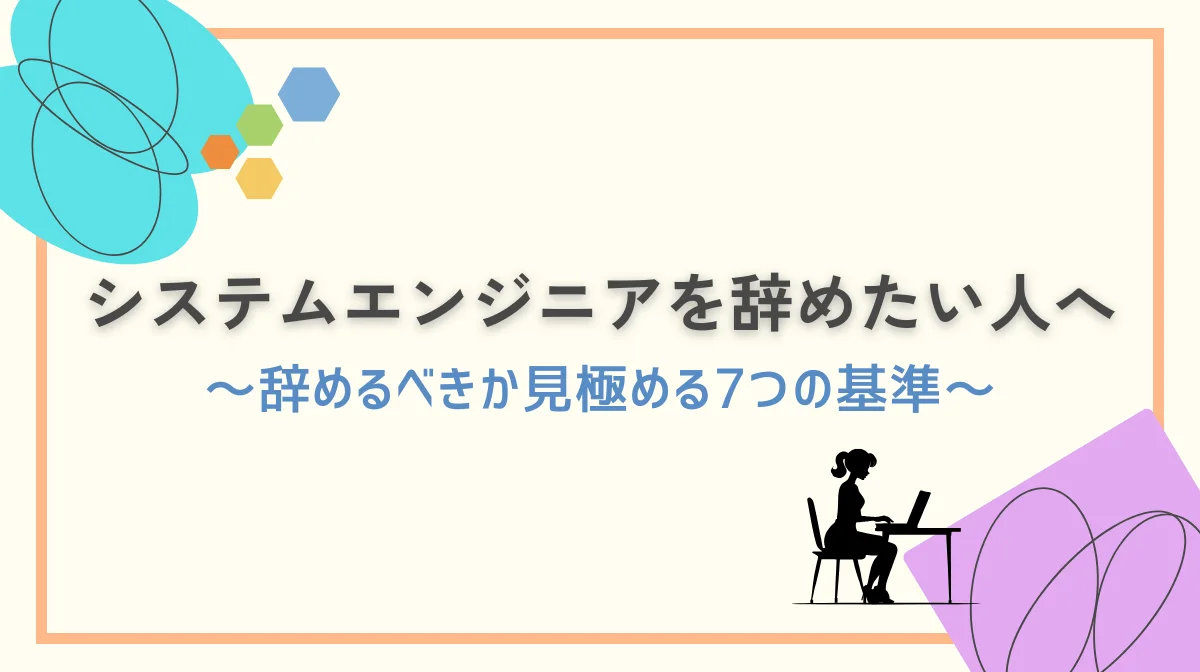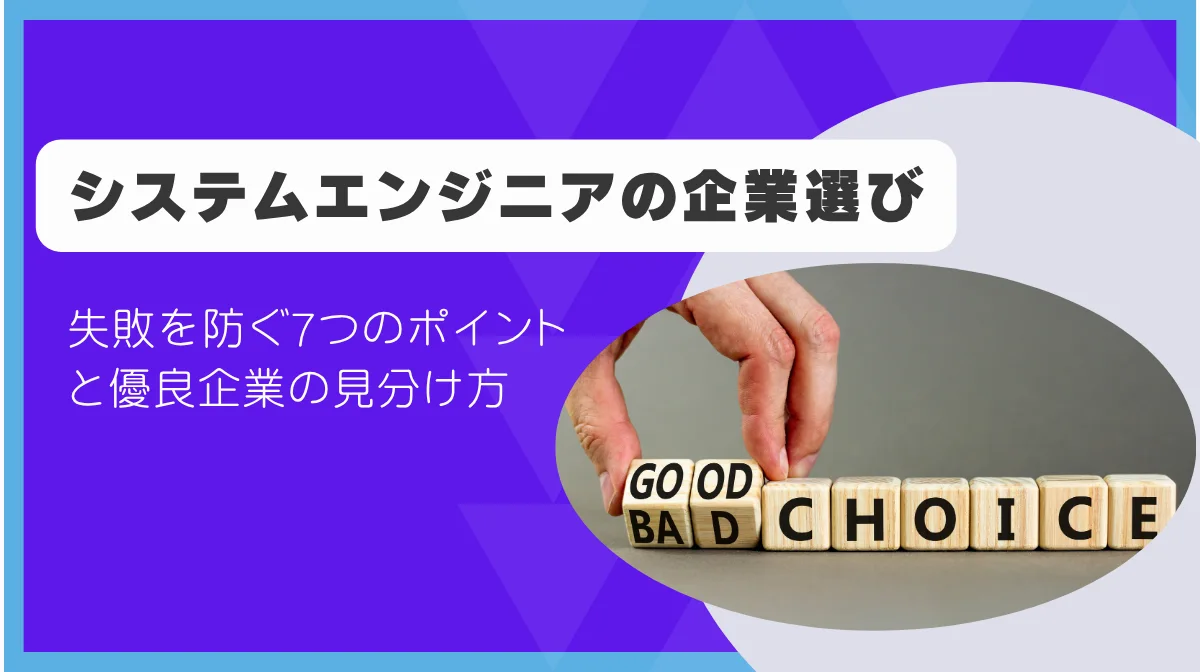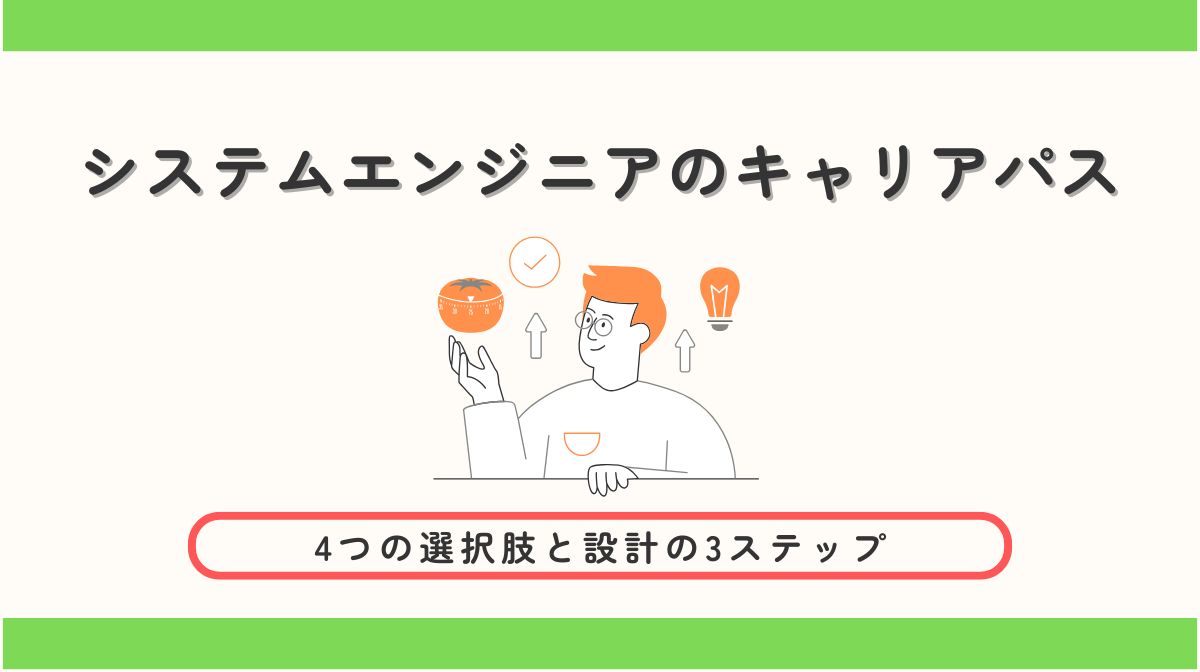Landing an engineering job in Japan requires more than just technical skills. Your resume serves as the critical first impression that determines whether you’ll advance to the interview stage.
Unlike Western-style CVs that emphasize individual achievements, Japanese resumes follow unique cultural conventions that can make or break your application.
This comprehensive guide reveals the insider secrets to crafting an engineer resume that resonates with Japanese hiring managers, addresses their specific concerns about foreign candidates, and positions you as the ideal long-term hire.
- You’ll learn how to write Japanese engineer resumes that appeal to hiring managers with proper cultural expressions.
- You’ll discover effective templates and techniques for showcasing overseas experience and technical skills.
- You’ll understand how to handle visa information and avoid common mistakes foreign engineers make.
1.Why Japanese Engineer Resumes Are Different
Why Japanese Resumes Are Different
Global CV:
“I achieved…”
Japan Resume:
“We achieved…”
What Japanese Companies Value
Technical
Skills
Cultural
Fit
Long-Term
Stability
The fundamental difference between Western CVs and Japanese resumes lies in cultural values.
While overseas resumes celebrate individual accomplishments with phrases like “I achieved 40% performance improvement,” Japanese resumes emphasize team contribution and collaborative success.
Japanese hiring managers evaluate foreign engineers through a specific lens.
They seek candidates who combine technical excellence with cultural adaptability, long-term commitment, and seamless team integration. Understanding this mindset transforms how you present your experience.
The most successful foreign engineer resumes demonstrate three core qualities: technical competence that adds immediate value, cultural adaptability that ensures smooth team integration, and stability indicators that address concerns about job-hopping or sudden departure.
2.Essential Elements Every Foreign Engineer Resume Must Include

Your resume must address the unique concerns Japanese employers have about foreign candidates while highlighting the advantages of your international background. Focus on these critical components:
- Visa status with stability indicators
- Language skills with practical application examples
- Technical expertise connected to Japanese market needs
- Project experience emphasizing team collaboration
- Cultural adaptability evidence
Personal Information and Visa Status
Include your current residence status clearly and positively.
Instead of simply stating “Work visa until 2026,” write “Engineer/Humanities visa valid until March 2026 (successful renewal record: 3 times). No work restrictions. Planning permanent residence application in 2025 for long-term career stability in Japan.”
This approach transforms potential concerns into confidence builders.
Hiring managers worry most about visa complications and sudden departures. Address these fears directly by emphasizing stability, renewal success, and future commitment.
Language Abilities with Technical Context
Rather than listing JLPT scores alone, demonstrate practical application in technical work.
“JLPT N1 certified with proven ability to create customer technical proposals in Japanese (monthly), participate in stakeholder meetings, and provide technical mentoring to junior developers” carries far more weight than certification scores alone.
Your English proficiency becomes a competitive advantage when framed correctly. Position it as enabling international collaboration, accessing cutting-edge technical resources, and supporting company global expansion rather than just a language skill.
Technical Skills with Japanese Market Context
Present your technical stack through the lens of Japanese business needs.
Instead of listing technologies, explain how your expertise addresses specific market demands. “React/TypeScript expertise gained through Silicon Valley fintech development, directly applicable to Japan’s growing digital banking sector” connects your skills to local opportunities.
Emphasize technologies that are advanced internationally but emerging in Japan. Experience with Kubernetes, serverless architectures, or AI/ML platforms positions you as bringing valuable cutting-edge knowledge to Japanese teams.
Project Experience with Team Dynamics
Describe projects emphasizing collaborative achievements and process improvements rather than individual heroics.
Transform “I built a microservices architecture that improved performance by 50%” into “Collaborated with a 6-member team to design microservices architecture, contributing database optimization expertise that helped achieve 50% performance improvement. This success was possible through close cooperation with frontend and DevOps specialists.”
Include specific examples of cross-cultural teamwork, consensus building, and knowledge sharing. Japanese employers highly value these soft skills alongside technical competence.
■日本でエンジニアとしてキャリアアップしたい方へ
海外エンジニア転職支援サービス『 Bloomtech Career 』にご相談ください。「英語OK」「ビザサポートあり」「高年収企業」など、外国人エンジニア向けの求人を多数掲載。専任のキャリアアドバイザーが、あなたのスキル・希望に合った最適な日本企業をご紹介します。
▼簡単・無料!30秒で登録完了!まずはお気軽にご連絡ください!
Bloomtech Careerに無料相談してみる
3.Tailoring Your Resume by Background and Experience Level
Tailor Your Resume for Success
Asian Engineers
Large-Scale Projects
Cultural Adaptation
Western Engineers
Innovation & Process
Long-Term Commitment
New Grads / Career Changers
Growth Potential
Continuous Learning
Senior Engineers
Leadership
Team Collaboration
Different backgrounds require distinct positioning strategies to maximize appeal to Japanese employers.
Asian Engineers: Leveraging Scale and Technical Depth
Engineers from China, Korea, India, and other Asian countries often have experience with massive-scale systems and cutting-edge technologies. Frame this experience in terms of business value for Japanese companies.
Describe large-scale projects with specific metrics that resonate with Japanese business culture. “Led development of e-commerce platform handling 10 million daily active users across 5 countries, achieving 99.99% uptime during peak shopping periods through careful system design and proactive monitoring.”
Address cultural adaptation proactively. Include examples of successful integration with Japanese teams, participation in consensus-building processes, and appreciation for Japanese quality standards. This demonstrates cultural fit alongside technical excellence.
Western Engineers: Emphasizing Innovation and Global Standards
Engineers from North America, Europe, and other Western countries should position themselves as bridges to global markets and sources of international best practices.
Highlight experience with agile methodologies, DevOps culture, and modern development practices that Japanese companies are eager to adopt. “Introduced GitOps practices and infrastructure-as-code to traditional development teams, achieving 60% deployment time reduction while maintaining Japanese quality standards through gradual implementation and team consensus building.”
Address long-term commitment concerns directly. Include specific plans for permanent residence, family settlement in Japan, property purchases, or other stability indicators that reassure employers about your dedication to building a career in Japan.
New Graduates and Career Changers: Showcasing Potential and Motivation
Recent graduates and career changers must emphasize learning ability, growth potential, and genuine commitment to engineering excellence rather than extensive experience.
Highlight university projects, internships, and self-directed learning with measurable outcomes. “Developed IoT environmental monitoring system using Raspberry Pi and Python for graduation research, achieving 30% water usage reduction in campus demonstration. Currently expanding skills through AWS certification study and contributing to open-source projects.”
Demonstrate continuous learning and professional development. Japanese employers value dedication to improvement and long-term skill building over immediate expertise.
Senior Engineers: Balancing Leadership and Collaboration
Experienced engineers must demonstrate leadership capabilities while emphasizing collaborative approaches that fit Japanese organizational culture.
Present management experience through the lens of team development and consensus building. “Led 12-member international engineering team through careful stakeholder management and cultural bridge-building, achieving on-time delivery while maintaining team harmony across 4 different cultural backgrounds.”
Include specific examples of mentoring, knowledge transfer, and organizational improvement that align with Japanese values of continuous improvement and team development.
4.Critical Success Factors Japanese Employers Evaluate

Understanding what Japanese hiring managers prioritize helps you craft targeted messaging that addresses their specific concerns and interests. Focus on demonstrating these key qualities:
- Technical excellence with practical problem-solving
- Cultural integration and communication skills
- Long-term commitment and stability indicators
- Value as a bridge to international markets
Technical Excellence with Practical Application
Japanese employers seek engineers who combine deep technical knowledge with practical problem-solving abilities. They particularly value experience with technologies that are advanced internationally but still emerging in Japan.
Position your cutting-edge experience as competitive advantage. “Implemented chaos engineering practices learned from Netflix methodology, adapting the approach for Japanese risk-averse culture through careful planning and stakeholder education, resulting in 99.99% system reliability improvement.”
Demonstrate ability to adapt international best practices to Japanese contexts. This shows both technical sophistication and cultural sensitivity.
Communication and Cultural Integration
Language skills matter, but cultural adaptation skills matter more. Japanese employers need confidence that you can navigate complex organizational dynamics, participate effectively in decision-making processes, and contribute to team harmony.
Provide specific examples of successful cross-cultural collaboration, conflict resolution, and consensus building. “Successfully mediated technical disagreements between Japanese quality-focused approach and international speed-focused methodology, finding solutions that satisfied both perspectives and strengthened team unity.”
Include examples of proactive communication, such as detailed progress reporting, early escalation of issues, and collaborative problem-solving that aligns with Japanese business practices.
Long-term Commitment and Stability
The biggest concern Japanese employers have about foreign engineers is retention. They invest heavily in employee development and prefer candidates who will contribute long-term value rather than using the position as a stepping stone.
Address stability concerns through concrete evidence and future planning. “Purchased apartment in Tokyo with 30-year mortgage, demonstrating commitment to long-term residence. Planning to apply for permanent residence in 2025, with clear 5-year career development goals within the Japanese technology sector.”
Include family stability, community involvement, and long-term professional development plans that reinforce your commitment to building a life and career in Japan.
Value as Global Bridge
Japanese companies increasingly recognize the need for international perspective and global market access. Position yourself as a valuable bridge between Japanese innovation and international markets.
Highlight experience with international compliance requirements, multi-language system development, and global team coordination. “Led technical infrastructure design for GDPR compliance during European expansion, managing legal requirements across 12 countries while maintaining Japanese quality standards.”
Demonstrate ability to help Japanese companies access international talent, best practices, and market opportunities through your global network and experience.
■日本でエンジニアとしてキャリアアップしたい方へ
海外エンジニア転職支援サービス『 Bloomtech Career 』にご相談ください。「英語OK」「ビザサポートあり」「高年収企業」など、外国人エンジニア向けの求人を多数掲載。専任のキャリアアドバイザーが、あなたのスキル・希望に合った最適な日本企業をご紹介します。
▼簡単・無料!30秒で登録完了!まずはお気軽にご連絡ください!
Bloomtech Careerに無料相談してみる
5.Common Mistakes That Damage Foreign Engineer Applications

Avoiding critical errors can significantly improve your success rate with Japanese employers. Here are the most damaging mistakes to avoid:
- Overly aggressive self-promotion that ignores team contributions
- Insufficient demonstration of cultural understanding
- Unclear or concerning visa and stability information
- Technical jargon without business context or impact
Overly Aggressive Self-Promotion
Western-style resumes often include bold claims and aggressive self-promotion that can backfire in Japanese culture. Phrases like “I revolutionized the development process” or “I single-handedly improved system performance” may be perceived as arrogant or dismissive of team contributions.
Wrong approach: “I revolutionized the development process and increased productivity by 40%.”
Right approach: “Through close collaboration with the development team, I contributed database optimization expertise that helped achieve 40% query performance improvement, supporting overall system reliability goals.”
Insufficient Cultural Context
Many foreign engineers fail to demonstrate understanding of Japanese business culture, leaving employers uncertain about cultural fit.
Include specific examples of adaptation to Japanese practices such as detailed documentation, careful consensus building, long-term quality focus, and team harmony maintenance. These details reassure employers about your ability to integrate successfully.
Unclear Visa and Stability Information
Vague or concerning visa information creates unnecessary anxiety for employers. Unclear statements about future plans or renewal uncertainty can eliminate otherwise qualified candidates.
Wrong approach: “Current visa expires in 2026, hoping to renew.”
Right approach: “Engineer/Humanities visa valid until March 2026 (successful renewal record: 3 times). Planning permanent residence application in 2025 for enhanced long-term stability.”
Technical Jargon Without Business Context
Listing technologies and frameworks without connecting them to business value fails to demonstrate practical impact and problem-solving ability.
Always connect technical skills to business outcomes and team success. Explain how your expertise solves real problems and contributes to organizational goals rather than simply demonstrating technical knowledge.
6.Writing Techniques That Resonate with Japanese Employers
Writing Techniques that Resonate
Balance Confidence
& Humility
Emphasize Process
& Quality
Show Continuous
Improvement
Use Respectful
Language
Specific language choices and presentation styles can significantly impact how Japanese hiring managers perceive your application. Master these key techniques:
- Balance confidence with humility and learning openness
- Emphasize process, quality, and long-term thinking
- Demonstrate continuous improvement mindset (kaizen)
- Use appropriate honorific language when writing in Japanese
Balancing Confidence with Humility
Japanese business culture values confidence balanced with humility and openness to learning. Avoid both excessive modesty and aggressive self-promotion.
Instead of: “I accomplished significant performance improvements.”
Write: “Contributed to team success through database optimization expertise, helping achieve 50% performance improvement through collaborative problem-solving.”
This demonstrates both competence and cultural awareness while showing respect for team contributions.
Emphasizing Process and Quality
Japanese employers highly value careful processes, attention to detail, and long-term thinking. Highlight your experience with methodical approaches, quality assurance, and sustainable development practices.
Describe how you approach complex problems systematically, involve stakeholders in decision-making, and prioritize long-term maintainability over quick fixes. “Implemented comprehensive testing strategy including unit tests, integration tests, and user acceptance testing, achieving 95% code coverage and reducing production bugs by 70%.”
Demonstrating Continuous Improvement
The concept of “kaizen” or continuous improvement is deeply embedded in Japanese business culture. Show how you actively seek opportunities to learn, improve processes, and enhance team capabilities.
Include examples of self-directed learning, process improvements you’ve suggested or implemented, and how you help others develop their skills and knowledge. “Established monthly technical sharing sessions where team members present new technologies and best practices, resulting in adoption of 3 new tools that improved development efficiency by 25%.”
Using Appropriate Honorific Language
When writing in Japanese, use appropriate business language that demonstrates respect and professionalism. Avoid overly casual expressions or direct commands that may seem disrespectful.
Practice using expressions like “humbly request consideration” (謹んでご検討をお願いいたします) or “would be honored to contribute” (貢献させていただく機会をいただければ光栄です) rather than demanding or presumptuous language.
7.Strategic Positioning for Maximum Impact
Positioning for Maximum Impact
Create a
Coherent Story
Address
Concerns
Highlight
Unique Value
Your resume should tell a compelling story that positions you as the ideal candidate for Japanese engineering roles.
Creating Narrative Coherence
Connect your international experience, technical skills, and cultural adaptation into a coherent narrative that explains why you’re pursuing opportunities in Japan and how your background creates unique value.
Avoid presenting your career as a random series of jobs or experiences. Instead, show progression toward your current goals and how each experience prepared you for success in Japanese engineering environments.
Addressing Employer Concerns Proactively
Anticipate and address common concerns about foreign engineers before they become obstacles. These typically include communication ability, cultural fit, long-term commitment, and visa complications.
Use your resume to provide evidence that directly counters these concerns rather than hoping to address them later in the interview process.
Highlighting Unique Value Proposition
Identify what makes you uniquely valuable compared to both other foreign engineers and Japanese candidates. This might be specific technical expertise, international market knowledge, or cross-cultural leadership abilities.
Position these unique strengths as solutions to specific challenges that Japanese companies face, such as global expansion, technology adoption, or international team management.
8.Conclusion: Your Path to Engineering Success in Japan

Creating an effective engineer resume for the Japanese market requires understanding both technical requirements and cultural expectations.
Success depends on demonstrating technical excellence while showing deep respect for Japanese business culture and long-term commitment to building your career in Japan.
The most successful foreign engineers position themselves as bridges between international innovation and Japanese quality standards, bringing valuable global perspective while adapting respectfully to local practices and expectations.
By following these guidelines and avoiding common mistakes, you can create a resume that not only showcases your technical capabilities but also addresses employer concerns and demonstrates your potential for long-term success in Japanese engineering environments.
Remember that your resume is just the beginning of your journey. Use it to open doors to conversations where you can further demonstrate your technical skills, cultural adaptability, and commitment to contributing meaningfully to Japanese innovation and engineering excellence.

